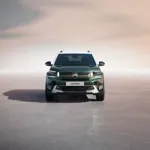The hazard perception section of the driving theory test is set to be updated with computer generated imagery (CGI) to test candidates’ awareness of risk in more modern driving environments that better reflect real-world situations.
Filmed video clips are currently used to test candidates’ reactions to developing hazards on the road.
The scenarios in these clips are still relevant, but the image quality isn’t as clear or defined as modern digital technology allows.
New CGI clips will be introduced to the test from early next year. The first new clips show the same situations as the filmed clips, but are clearer on the screen and include updated vehicles, roads and surroundings to reflect modern day driving.
Using CGI will also allow the Driver Vehicle Standards Agency to develop new clips that include a wider range of hazards, for example including situations with vulnerable road users like children or cyclists that would previously have been difficult to film. The CGI clips could also include a range of driving conditions, such as night time driving or bad weather.
Alastair Peoples, DVSA chief executive, said: “The theory test plays an essential role in making sure that new drivers know the Highway Code and the rules of the road.
“Research has shown how effective the hazard perception test is in reducing the number of crashes involving newly qualified drivers.
“Using CGI clips in the hazard perception test will allow us to present clearer, more up to date situations, ensuring the test fully reflects the realities of modern day driving.”
DVSA worked with Nottingham University’s accident research unit to trial the CGI clips.
Research fellow Dr Peter Chapman said: “We found that CGI clips retained all the benefits of traditional videos in discriminating between good and bad candidates, whilst allowing a more attractive, flexible, and up-to-date test."
Every year around 1.5m hazard perception tests are taken as part of the theory test, with an average pass rate of 85% for the hazard perception section.

















Login to comment
Comments
No comments have been made yet.